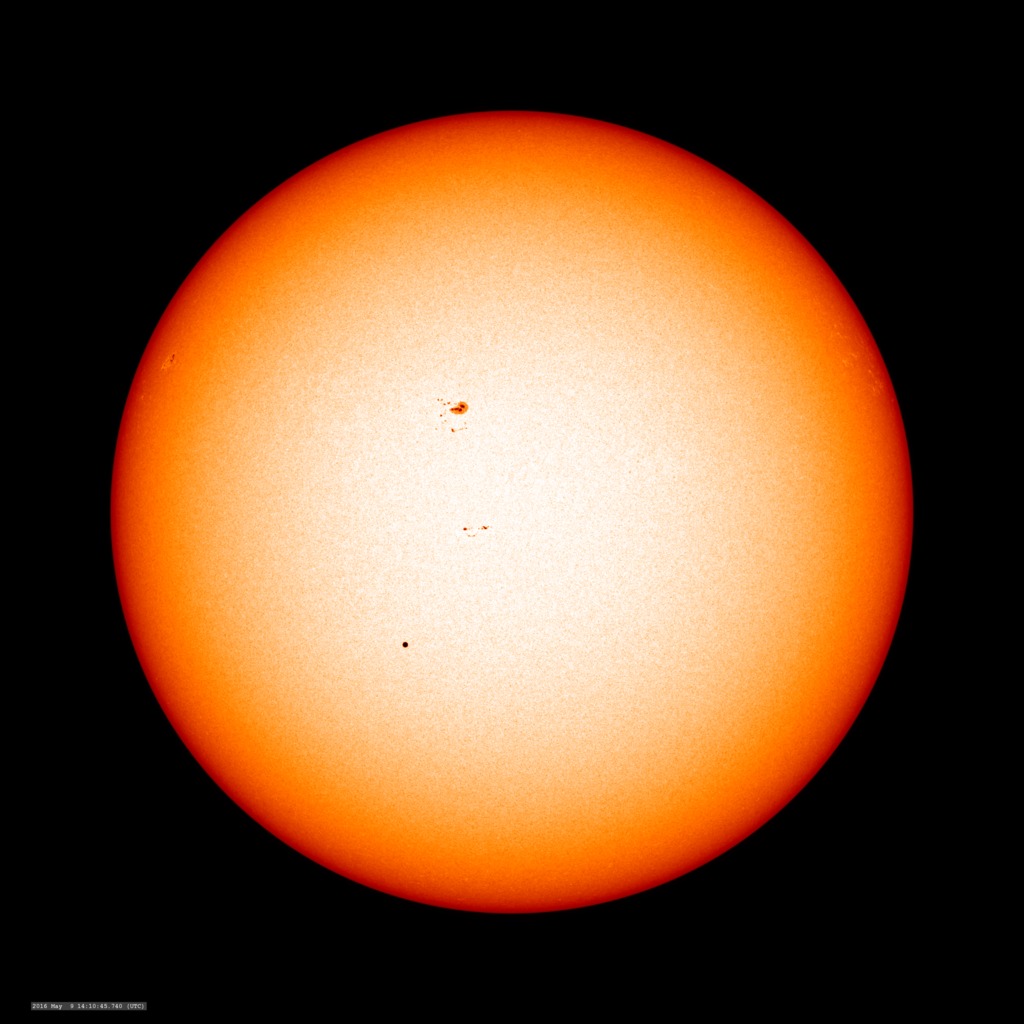Mercury Transit, May 2016
mercury transit
On May 9, 2016, between about 7:12 a.m. and 2:42 p.m. EDT, Mercury passed directly between the sun and Earth. This event—which happens about 13 times each century—is called a transit. NASA’s Solar Dynamics Observatory, or SDO, studies the sun 24/7 and captured the entire event. This visualization shows Mercury’s journey across the sun.
Although Mercury zooms around the sun every 88 days, Earth, the sun and Mercury rarely align. And because Mercury orbits in a plane that is tilted from Earth’s orbit, it usually moves above or below our line of sight to the sun.
Transits provide a great opportunity to study the way planets and stars move in space—information that has been used throughout the ages to better understand the solar system and which still helps scientists today calibrate their instruments.
transit zoom
Credits
Please give credit for this item to:
NASA's Goddard Space Flight Center
-
Visualizer
- Tom Bridgman (Global Science and Technology, Inc.)
-
Technical support
- Laurence Schuler (ADNET Systems, Inc.)
-
Support
- Mark Malanoski (Global Science and Technology, Inc.)
Release date
This page was originally published on Wednesday, May 25, 2016.
This page was last updated on Sunday, December 15, 2024 at 12:24 AM EST.
